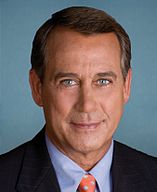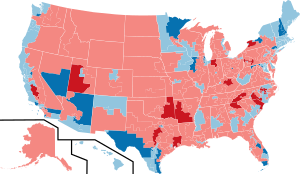United States House of Representatives elections, 2012
|
|
||||||||||||||||||||||||||||||||||||||||||||
|
||||||||||||||||||||||||||||||||||||||||||||
|
||||||||||||||||||||||||||||||||||||||||||||
|
|
||||||||||||||||||||||||||||||||||||||||||||
|
Results:
Democratic hold
Democratic gain
Republican hold
Republican gain
|
||||||||||||||||||||||||||||||||||||||||||||
|
||||||||||||||||||||||||||||||||||||||||||||
The 2012 United States House of Representatives elections were held on Tuesday, November 6, 2012. It coincided with the re-election of President Barack Obama. Elections were held for all 435 seats representing the 50 U.S. states and also for the delegates from the District of Columbia and five major U.S. territories. The winners of this election cycle served in the 113th United States Congress. This was the first congressional election using districts drawn-up based on the 2010 United States Census.
Although Democratic candidates received a nationwide plurality of more than 1.4 million votes (1.2%) in all House elections, the Republican Party won a 33-seat advantage in the state-apportioned totals, thus retaining its House majority by 17 seats. This disparity – common in close elections involving single-member district voting – has on occasion been attributed to gerrymandering in the congressional redistricting process following the 2010 United States Census. However, some analysts have argued that Republicans would have won the House even without taking into account the impact of gerrymandering. An alternative explanation was that the large number of Democratic votes in urban centers led to "unintentional gerrymandering," as compact districts naturally led to "wasted votes" in districts that easily elected Democratic candidates. The GOP also had a greater number of incumbents, who tend to have an advantage in elections.
...
Wikipedia



